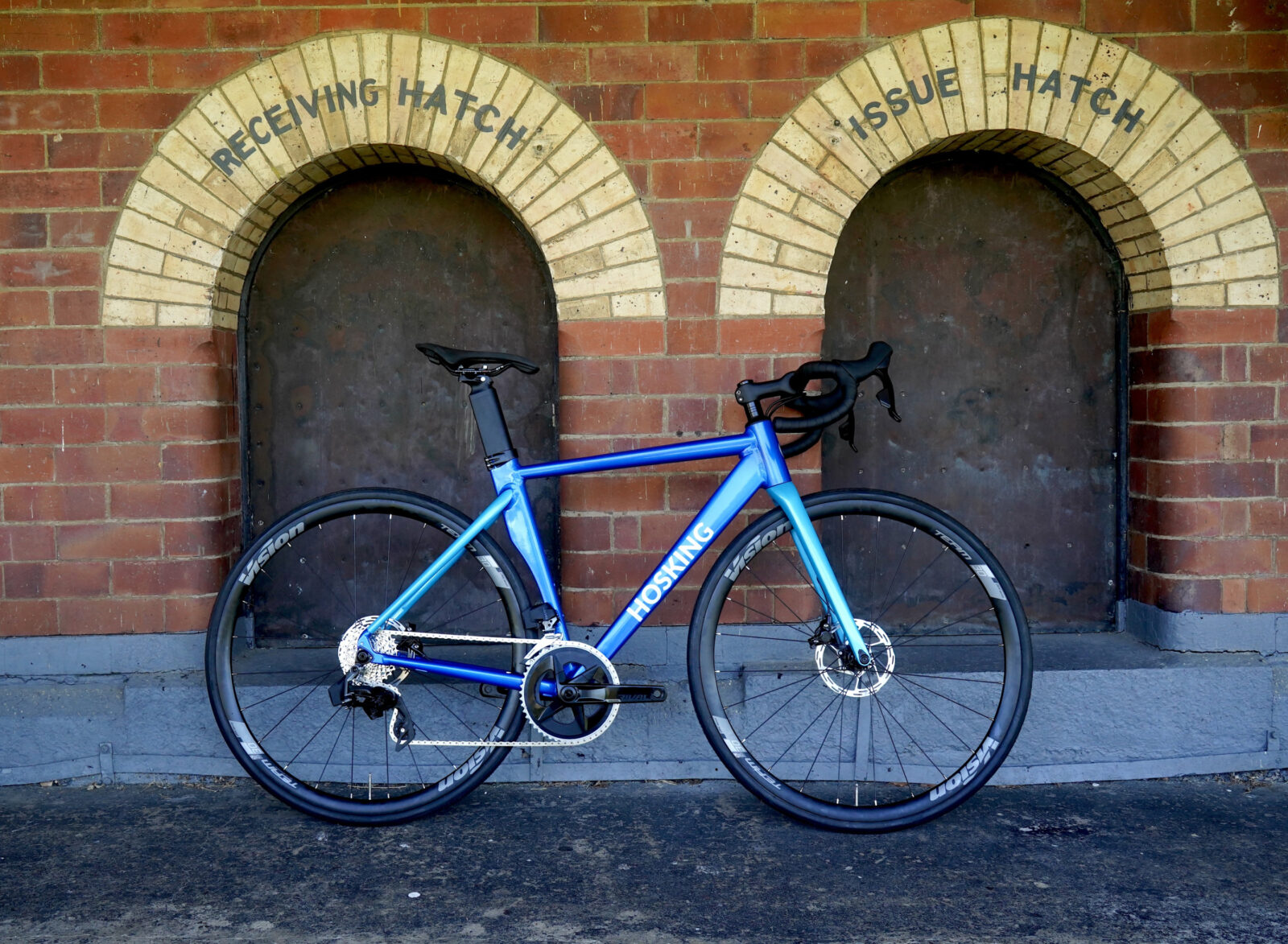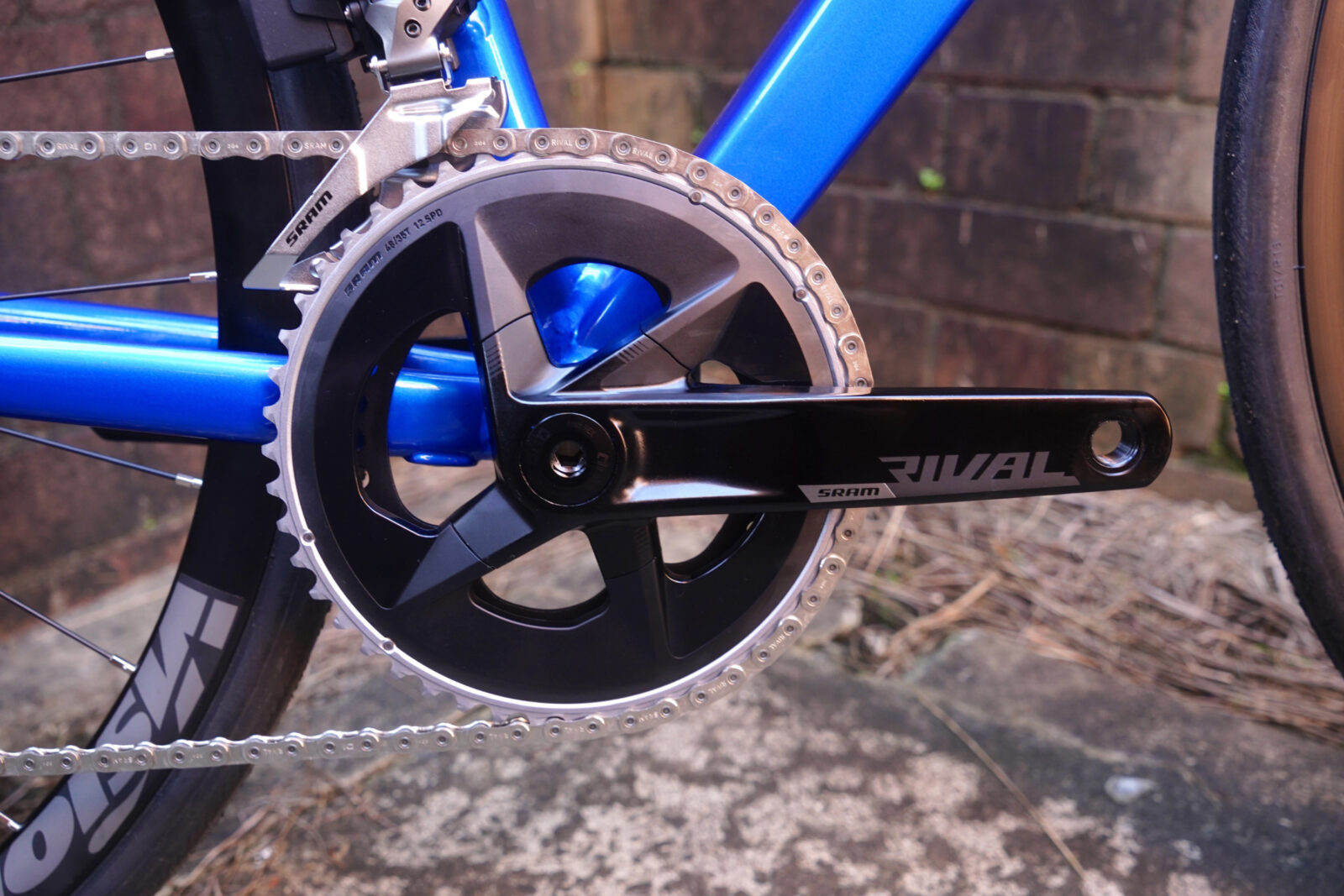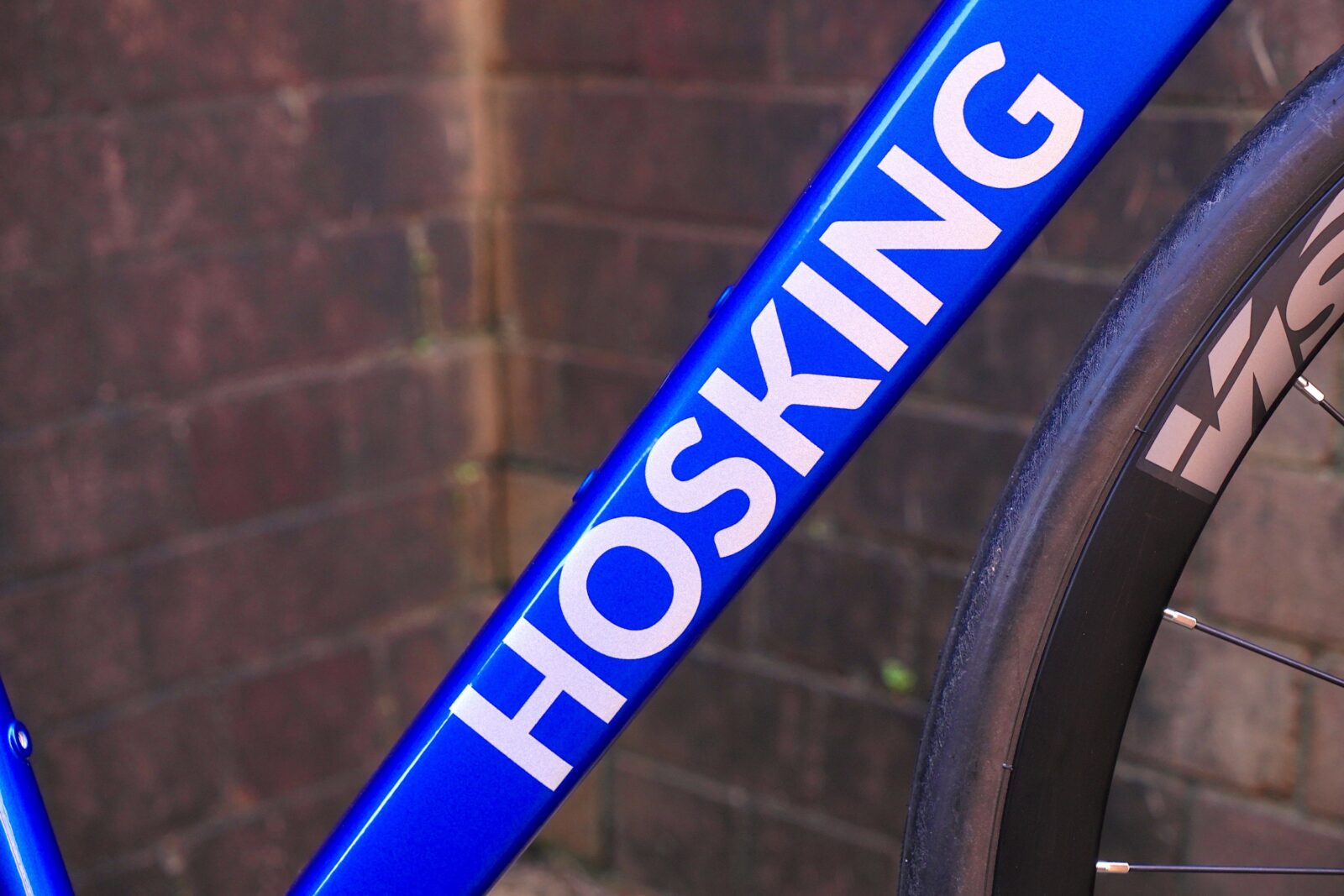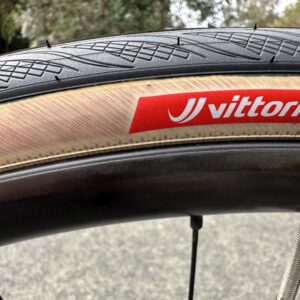Hundreds of bikes have been reviewed in the pages of Bicycling Australia over the years. Typically, they’ve been upper tier models, high spec and equally high priced, so when Peter Maniaty had the opportunity to sample the entry-level road offering from Hosking Bikes he grasped it with both hands.
Let’s cut straight to it, shall we? The HR1 from Hosking Bikes isn’t the lightest build. It isn’t the fastest or the most aero. Nor does it have the most advanced carbon components. What it does have, however, is a whole lot of commonsense thanks to a wonderfully versatile alloy frame, 12-speed wireless electronic shifting and sharp value for money. Even better, rather than a generic off-the-shelf open mould, the HR1 boasts the same proprietary HR frame that features across all Hosking models, developed with direct input from Chloe Hosking in partnership with Jayu Yang, a highly respected and influential figure in Taiwan’s billion-dollar cycling industry.
Chloe herself describes the HR1 as “the perfect first bike” and it’s hard to argue. “At the heart of our philosophy is making bikes more accessible and affordable, especially for people who aren’t cycling natives,” she explains, pointing to the very intentional choice of aluminium frames over carbon. “Aluminium is more affordable and durable which is so important when you’re just starting out. Our frames are also designed to be easily scalable.”
This versatility is central to the Hosking Bikes value proposition according to Chloe’s business partner and husband Jack Lindsay: “You can take the HR frame and build the [top of the range] HR6 and it’ll weigh in right alongside a Cervélo S5…but that frame can also become the HR1, an outstanding first bike that’s built to grow with you.”
First impressions
Prioritising functionality over design gimmicks, the HR1 is a conventionally styled road bike with alloy components from the ground up; the only exception being the carbon fork. The review build is nicely finished with tidy aluminium welds and an eye-catching ‘Icy Blue/Blue’ colour scheme. Picking it up it’s also reasonably heavy; a trait it shares with most entry-level alloy builds. On my home scales measured weight for the HR1 was 9.5kg (54cm frame, no pedals). According to the Hosking website that’s around 1.5kg more than the HR4 model which uses the same frame – meaning the difference relates almost entirely to the wheelset and components. That’s good news; a few strategic upgrades and you could easily shave 500-750 grams, if not more.

Frame & geometry
There isn’t much in the way of overt truncated kammtail tubing, but the HR1 frame is still very much in the mould of an aero race build – unsurprising given the sprint background of its founder. The design boasts a robust downtube, subtly tapered top tube, blade-shaped seat post, rear wheel seat tube cut-out and a low-ish front end with a headtube of just 127mm (54cm frame). The hose routing is clean and largely internal. Looking more closely at the frame dimensions, the HR1 definitely sits on the more compact side with a reasonably short wheelbase (980mm), stack (545mm), reach (382mm) and standover height (760mm). Having said all this, I still found the riding position quite comfortable.
Wheels & components
Whilst higher-tier Hosking models feature carbon rims and lighter groupsets, the only carbon you’ll find on the HR1 is the fork. Everything else is, quite intentionally, alloy including the two-piece cockpit with FSA handlebars and stem. The tubeless-ready Vision Team 30 wheels are a bulletproof specification for an entry-level bike. That said, with an internal rim width of just 19mm they’re quite narrow by modern standards; they’re also hefty at around 1,900 grams. Of course, for most riders the biggest drawcard for the HR1 is the inclusion of the SRAM Rival AXS Wireless 12-Speed groupset, not something you’d typically find on an entry-spec bike. Whilst not as refined as its more expensive SRAM AXS siblings, shifting is still smooth and assured, as is braking performance (hydraulic disc, 160mm rotors front and back) – making it an attractive step up from competing builds with mechanical groupsets. As already mentioned, being quite a structurally conventional bike, the HR1 should also be quite straightforward to upgrade in the future as and when your budget allows.
The value
At $3,800, brand new, the HR1 delivers tempting value as a ‘first proper bike’ and compares favourably with entry-level road offerings from most of the major global brands – especially if you want 12-speed wireless shifting. For me, at this price point the key decision is, do you want a brand new bike that can grow with you? Or do you roll the dice with a higher spec pre-owned bike that might be great, but might also be nothing but trouble? Only you can answer that. If you’re interested, the HR alloy frameset and carbon fork can also be purchased as a standalone package for $2,800 RRP.
The ride
Hitting the road, the HR1 proves a capable performer across the board, entirely in keeping with its entry-level characteristics. It certainly isn’t a slow bike, but its lighter and higher-spec siblings such as the HR5 and HR6 will undoubtedly be more responsive in a wider variety of riding conditions. In particular, I found the extra weight makes acceleration a little subdued from lower speeds; however, once you build up some momentum the HR1 taps along very nicely.
Alloy frames generally have a reputation for being quite stiff and the HR1 road feel is definitely on the firmer end of the compliance scale, especially with its alloy wheels and components. The ride position is reasonably low and compact, but still quite comfortable for short-to-mid distance rides. I found road vibrations became a little more noticeable, especially through my hands, on longer rides and bumpier surfaces which suggests a carbon stem and maybe even carbon bars could be beneficial. The more riding I did, the more I also became convinced running tubeless would be a great way to go; no dramas given the Vision Team 30 rims are tubeless-ready.
Whilst the ease and smoothness of 12-speed wireless shifting was greatly appreciated, the biggest standout for me was actually the way the HR1 handled. As the base model in the HOSKING range, I was expecting it to be a little languid and slow. I was wrong. The HR1 is refreshingly direct and nimble, providing an obedient and balanced ride with plenty of confidence to negotiate obstacles, corners and bunches. I really enjoyed piloting this bike around.
When it comes to hills, the HR1 is unlikely to be the first choice for dedicated climbers. Short pinches and modest ascents? No problem. In fact, I even set a few PBs on my local test climb (3km @ 3.5% average) albeit with a tailwind. Longer and sharper inclines, however, begin to stretch the friendship a little. If I owned the HR1 a lighter carbon wheelset would be the first upgrade on my list – so that’s exactly what I tried, swapping out the Vision Team 30 alloy wheels mid-review for a pair of 25mm climbing wheels. Around 500 grams lighter and with wider carbon rims (placing it more on par with the Hosking HR2 model) the difference was immediate; acceleration felt more lively whilst road buzz was noticeably reduced. The key learning, once again, is there’s plenty of scope to tinker, experiment and really make this build your own for years to come.
Summing up
Australian-founded, owned and based, HOSKING Bikes is blazing an important trail in a highly competitive market. As its entry-level offering, the HR1 is a critical part of this journey. It’s a rock solid option for riders getting into more serious road cycling, be they emerging juniors or adult newcomers. Compare it to a high-end, high-price performance build, and the HR1 will come second in almost every category. But that’s not the point. At $3,800, it’s unashamedly about getting people on bikes and bums on saddles – and against that criteria, there’s plenty to like. It makes a great addition to any ‘first bike’ shortlist and is well worth checking out.
Hosking Bikes can be purchased directly online or through a growing network of bike stores and retailers across Australia.
More info at hoskingbikes.com



Specifications
Hosking HR1
RRP: $3,799 (as reviewed)
Colour: Icy Blue/Blue
Frame: Series 1 HOSKING (Alloy)
Fork: Hosking HR (Carbon)
Handlebar: FSA Omega Compact (Alloy)
Stem: FSA Gossamer Stem (Alloy)
Headset: FSA NO.69 SRS
Saddle: Selle Repente NOVA AERON
Seat post: Al-Steed Aero Black (Alloy)
Brakes: SRAM RIVAL (Flat Mount)
Rotors: SRAM Paceline Centrelock (160mm Front & 160mm Rear)
Shifting: SRAM RIVAL AXS Wireless 12sp
Cassette: SRAM RIVAL AXS 12sp, 10-30T
Chain: SRAM RIVAL D1 12sp
Crankset: SRAM RIVAL AXS 12sp, 48/35
Bottom bracket: SRAM DUB BSA 68 Road Wide
Rims: Vision Team 30 (Alloy clincher, 30mm, tubeless ready)
Tyres: Mitas Rubena Arrow (700 x 28c)
Clearance (Max): 32mm
Proving her metal
Chloe Hosking retired from the pro peloton in 2023, one of the most accomplished Australian road cyclists of her generation. With a palmares boasting Commonwealth Games gold, multiple National Championships and 39 professional road victories, including stage wins at both the Giro d’Italia Internazionale Femminile and La Course by Le Tour de France, you could forgive the now 34-year-old for wanting to put her feet up. But it quickly became clear the Bendigo-born Canberran had zero intention of riding off quietly into the sunset. Hosking, if anything, has been busier than ever in the past two years. She completed an undergraduate Communications degree whilst still racing and has since finished a second degree in Law, founded the Hosking Women in Sport Scholarship and, perhaps most relevantly for this story, set up the world’s first female-owned performance bicycle brand, Hosking Bikes, which in addition to creating its own road and gravel frames, currently supports two domestic cycling teams, Analog Racing in Canada and Skyway Racing in the USA. Hosking is on a mission, to be sure – and it’s fuelled by alloy, not carbon.


Peter Maniaty
Peter Maniaty - Peter is Bicycling Australia’s senior journalist, and highly respected in the world of cycling. From bike reviews, to destination features and nitty gritty opinion pieces, he’s a gun writer.



Cheers Peter, I have been itching for this review to come out !!! They do look awesome in the light (purple is prob my fave)